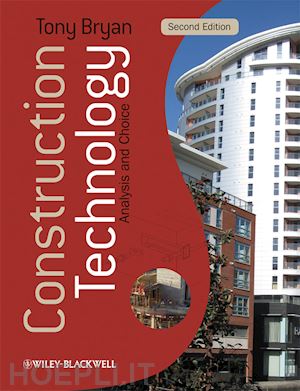The second edition of Construction Technology: Analysis and Choice has been expanded to include commercial buildings. This now covers, in a single textbook, all the basic forms of construction studied on professional courses.
The book takes as its theme the process of choice: what the expert has to know and how he/she might think through the decisions to be made about the design, production, maintenance and disposal of buildings.
It is written with the conviction that by focusing on the process of choice, the range of theory and knowledge that is useful to practice becomes explicit, making the link between knowledge and practice, and between understanding and experience.
The new edition has been updated throughout with extensive additions to Chapter13: Manufacture and Assembly and to Chapter 15: Sustainability. An entire new section has been added, covering all the main elements of commercial construction.
Students will find here explanations of how environments, structural behaviour, production know-how, cost and social concerns such as sustainability can be taken into account in the choice of construction. They will also gain a clear understanding of the construction details and specifications adopted for both housing and commercial buildings in the UK at the beginning of the 21st century.
* Provides a framework to think through proposed solutions
* Sets the choice of solution in both time and place, and in the context of sustainability
* Focuses on key questions: will the proposal fail; and can it be built?
* Considers a building's response to loading, environmental conditions and time
* Looks at the production process as manufacture and assembly
Book website at www.wiley.com/go/bryanconstructiontech2e
Contains nearly 200 fully referenced, clear line drawings to download for free, as well as suggested learning activities for lecturers to incorporate into their teaching programmes.











